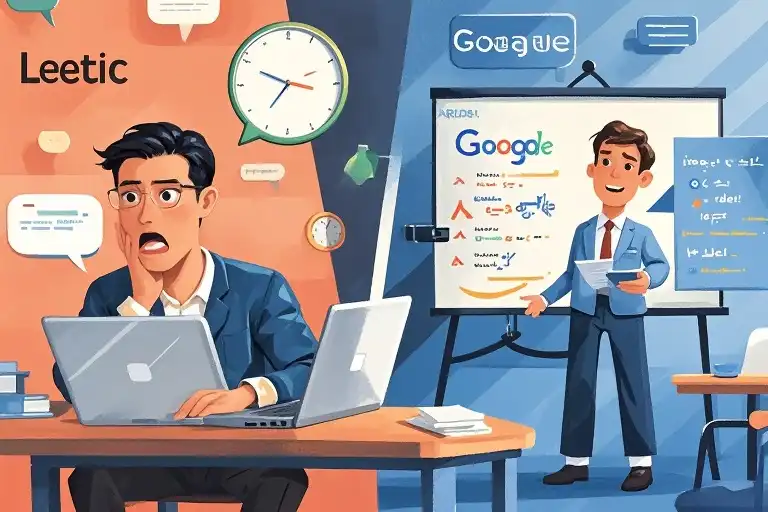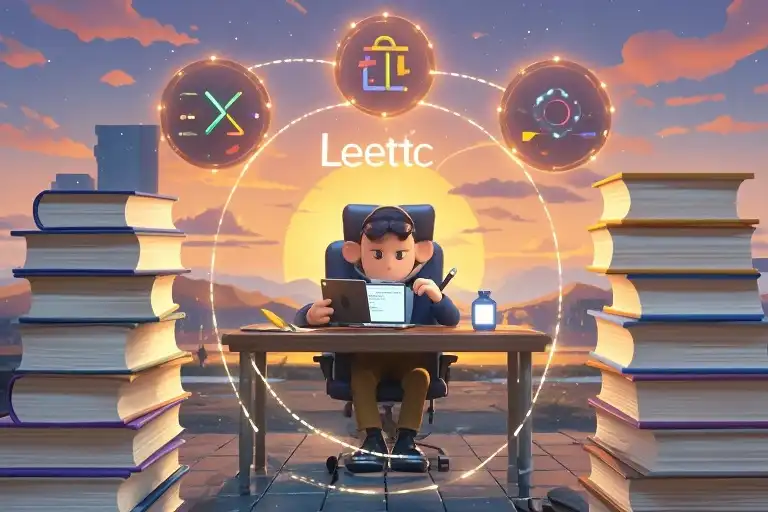You know that stomach-dropping moment when you’re 15 minutes into a coding interview and suddenly forget how to reverse a string? I do. After solving 1,372 LeetCode problems—yes, I kept count—I still managed to bomb six consecutive interviews at companies you’d recognize instantly.
The worst part? I knew the solutions. At home, I could optimize binary search trees while half-asleep. But put me in a Zoom room with a Microsoft interviewer? My brain would pull a disappearing act faster than Houdini.
Here’s the uncomfortable truth nobody tells you: LeetCode mastery and interview success aren’t the same skill. Through tear-inducing failures and eventual breakthroughs (including offers from Amazon and Google), I discovered what actually matters in technical interviews. Let’s break down exactly where most candidates go wrong—and how to course-correct.
🚫 The 3 Deadly Myths Every Coder Believes (Until Reality Hits)
Myth 1: “More Problems = Better Odds”
I used to treat LeetCode like Pokémon—gotta solve ’em all! But here’s what my submission stats didn’t show:
- 80% of solves were variations of 20% problem types I already knew
- 92% were solved in silent isolation (zero pressure simulation)
- 67% used auto-complete crutches I wouldn’t have in interviews
Reality Check: Solving 500 array problems won’t help if you freeze when asked to explain your approach under time constraints.
Myth 2: “Perfect Code = Perfect Score”
My early interviews went like this:
- Hear problem
- Code optimal solution silently
- Get rejected for “lack of collaboration”
Turns out, interviewers care more about your problem-solving journey than the destination. At Google, my now-manager admitted: “We can teach syntax. We can’t teach structured thinking under pressure.”
Myth 3: “Practice Makes Permanent”
Here’s the brutal math I learned too late:
Unconscious Practice = Same Mistakes × 1000Without deliberate:
- Time pressure drills
- Verbal walkthroughs
- Mistake analysis
…you’re just engraving bad habits deeper.
🧠 The Mindset Shifts That Changed Everything
Shift 1: From “Exam Taker” to “Storyteller”
Instead of silently coding, I learned to:
- Clarify ambiguities (even obvious ones)
- Verbally brainstorm 2-3 approaches
- Explain tradeoffs like a product engineer
Example script:
“I’m considering a hashmap approach here because we need O(1) lookups, but I’m concerned about memory usage for large datasets. Should we prioritize speed or space here?”
Shift 2: Embrace “Controlled Panic”
Through fMRI studies, researchers found that reframing anxiety as excitement improves performance under stress. My pre-interview ritual now includes:
- 5-minute power pose (TED Talk-tested!)
- Repeating “I’m excited to solve this” aloud
- Visualizing past coding wins
Shift 3: Fail Forward Formula
After each interview, I now dissect:
Mistake Type → Root Cause → Prevention ProtocolReal example from a Facebook rejection:
Mistake: Overlooked edge case in matrix traversal
Root Cause: Jumped into coding without whiteboarding examples
Fix: Now always sketch 3 test cases first
⚡ Battle-Tested Strategies That Actually Work
The 5-15-10 Time Rule
- 5 mins: Clarify requirements & edge cases
- 15 mins: Code brute force → optimized solution
- 10 mins: Test cases & complexity discussion
Pro Tip: Practice with a kitchen timer. The ticking creates helpful pressure.
The 3C Communication Framework
- Clarify (Ask 2+ questions before coding)
- Collaborate (“Would you prefer DFS or BFS here?”)
- Course-correct (“I notice a bottleneck here—mind if I adjust?”)
Mock Interviews That Don’t Suck
Generic mocks waste time. Effective simulations need:
- Industry-specific problems (AWS loves system design)
- Uncomfortable distractions (play subway noise!)
- Brutally honest friends (no “nice job!” platitudes)
My favorite resource: Pramp (free peer mocks with FAANG engineers)
💡 Your TL;DR Checklist for Next-Level Prep
Before Interview
✅ Practice explaining code aloud (shower thoughts count!)
✅ Research company’s tech stack & common problem types
✅ Simulate IDE-free coding (try leetcode.com/playground)
During Interview
✅ Start with “Let me rephrase the problem to confirm understanding”
✅ Verbalize 2 approaches before coding
✅ Ask “How’s my time management?” at 15-minute mark
After Interview
✅ Journal 3 things that went well + 1 growth area
✅ Re-solve the problem with new insights
✅ Send thank-you email highlighting key learnings
The Lightbulb Moment
It finally clicked during my Amazon onsite. When asked to design a parking garage system, I:
- Drew UML diagrams while discussing use cases
- Admitted uncertainty about pricing algorithms
- Asked “How would senior engineers approach this?”
The feedback? “Best collaborative session we’ve had all month.” No perfect code—just engaged problem-solving.
Here’s the secret sauce: Technical interviews aren’t coding exams. They’re simulations of how you’ll behave during Tuesday afternoon bug fixes. The sooner you practice thinking aloud instead of sprinting silently, the faster those rejections turn into offers.
Still doubt it? Try this tomorrow: Solve one LeetCode problem while explaining your steps to a rubber duck. You’ll immediately see why FAANG cares more about your communication than your code.




